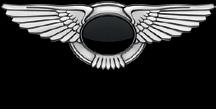
3 minute read
MIKE RUDD
We were in my office in the St James district of central London – my interrogator was an author researching the welltrodden topic of leadership and teamwork. She told me that a mutual colleague had recommended that she interview me, but she had no knowledge of my background.
“Right, Mike – let me get straight to the point. In your view, what is it that makes a team work well and what’s the leader’s role?”
Advertisement
“I think it’s straightforward,” I replied. “The key is that every member of the team is signed up to the idea that their personal success is absolutely tied in with the team’s good performance. This ensures that all individuals concentrate on the team outcome, which in turn provides their rewards. The leader’s job is to keep them focused on the job at hand and working with, not against each other.”
“Aha!” said the author. “You’re ex-Royal Air Force.” I was astonished that what I thought was simple common sense was so specifically revealing about me.
What she’d spotted was the so-called Action-Centred Leadership model developed by John Adair and adopted by the RAF and many other organisations around the world in the 20th century. In essence, it’s about balancing the three elements of team, individual and task needs to achieve success for all.
The clearest and, for me, most vivid demonstration of the principle comes from my days training and racing with my school rowing crew on Lake Karapiro in the Waikato and on the Manukau Harbour in Auckland. There’s a leader (the stroke), but everyone in the boat is expected to pull their weight in perfect unison to achieve the goal of winning with speed. It only works if everyone, including the leader, delivers
All for one… When we see our personal success as inseparable from that of the team, everybody wins.
PHOTO ROBBIE HUNTER
their best performance individually and operates wholly as a team.
This approach is a thing of joy to be a part of when all concerned buy into the idea. A team working like this, supporting each other and motivated to succeed, is not just effective – it also feels good and makes for contented, happy people. It becomes a nightmare when one or more team members decide that their route to stardom is achieved by running someone else down or looking better than everybody else.
Just in case this all seems so obvious that it hardly needs stating, consider that leadership and teamwork models occur in abundance in businesses; public bodies like police, health and emergency services; the armed forces; and the academic world. My experience and observation is that the principles of engagement between the leader, the individuals and the whole team are pretty robust. There are times in emergencies and when safety is an issue – as in fighting a major fire or in life-saving surgery – where a stronger role for the leader is necessary. But many of us have seen – perhaps in our studies, at work or in our family – examples of leadership routinely being too autocratic. This, particularly in my industry experience, leads to demotivated team members and poor results. It’s not a winning formula all round.
I believe that the leadership and teamwork approach I’ve described fits the New Zealand culture very well, on the whole. New Zealand has a world-beating record when it comes to building highperforming sports teams, for example. And we can also see day to day in our communities, schools and often in the workplace that consideration and engagement of individuals and developing a winning team mentality is a successful approach. It’s a culture worth cherishing and working on to sustain and build a contented, teamminded and successful nation.

The new Continental GT. Be Extraordinary.



Discover unmatched design, craftsmanship and technology at bentleyauckland.com or call (09) 975 8070. Visit us at 119 Great North Road, Grey Lynn.










